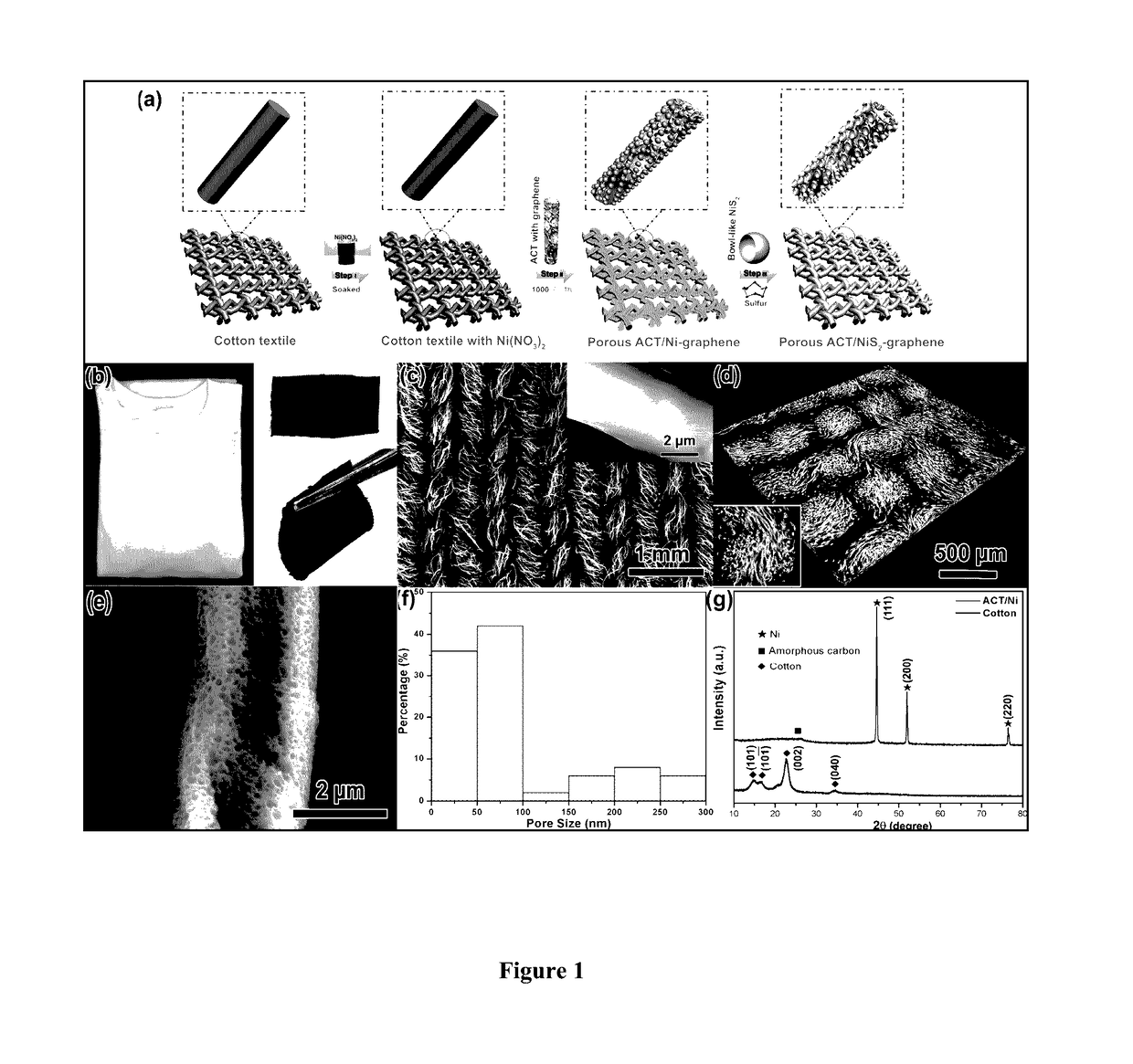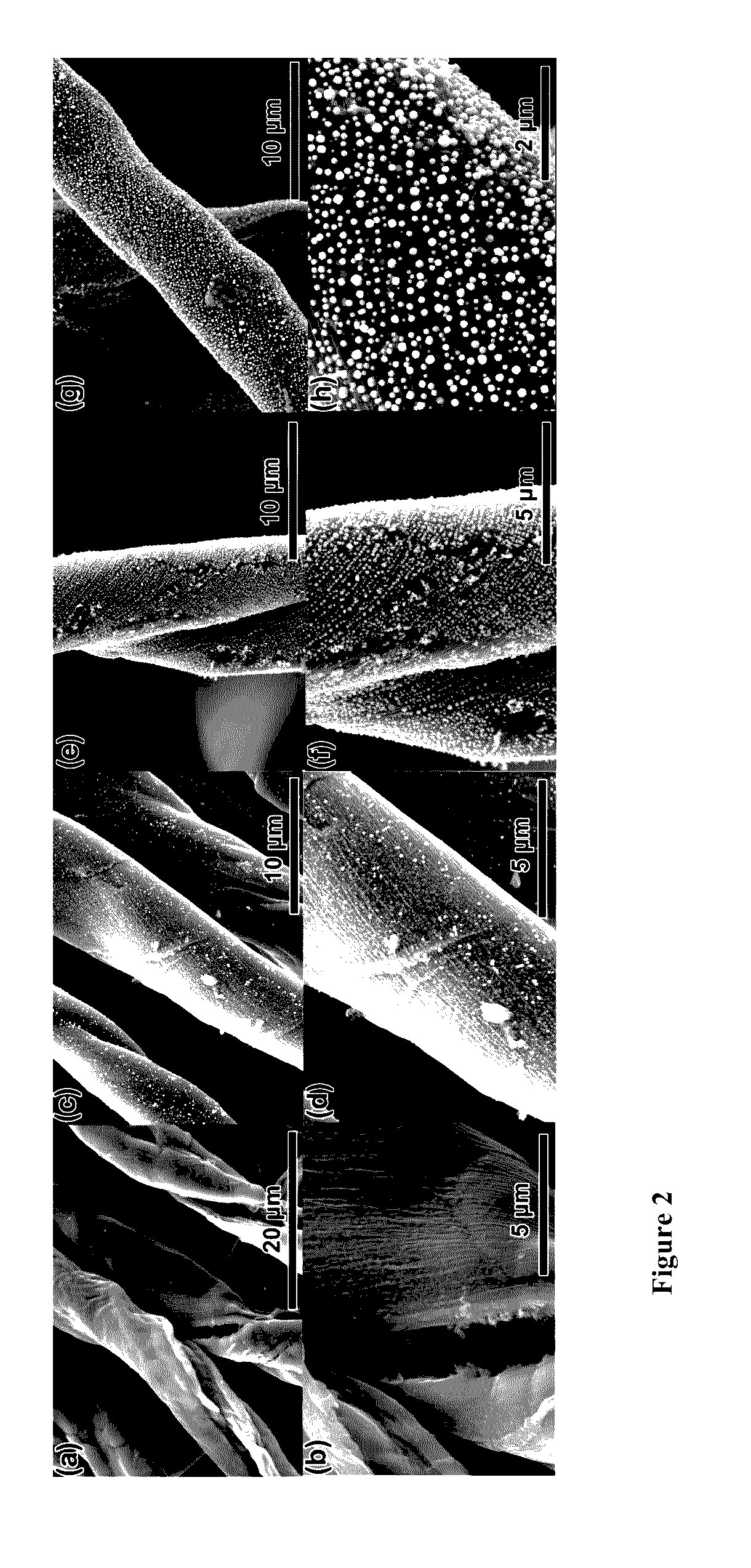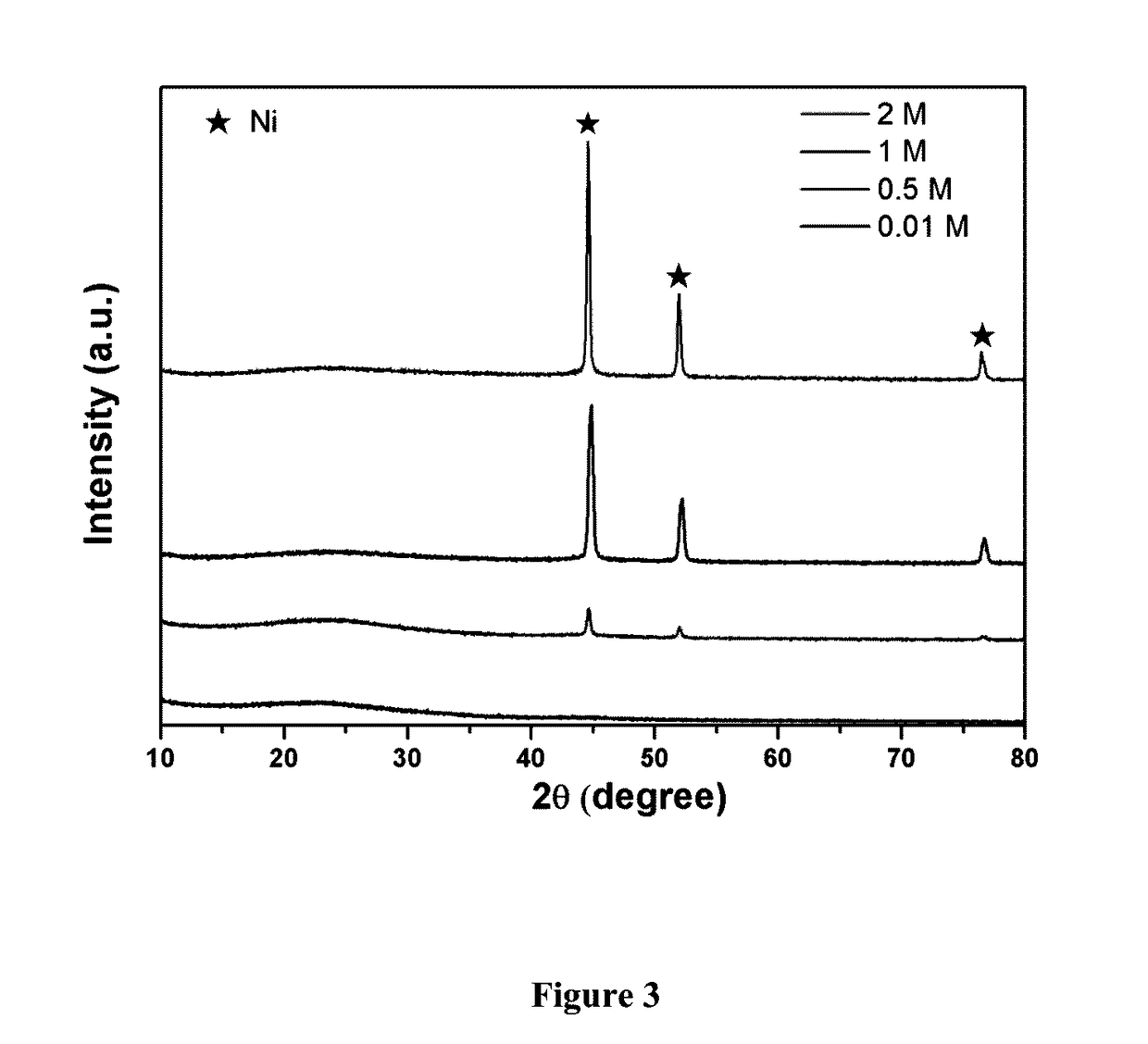Process of forming electrodes and products thereof from biomass
- Summary
- Abstract
- Description
- Claims
- Application Information
AI Technical Summary
Benefits of technology
Problems solved by technology
Method used
Image
Examples
examples
Preparation of Flexible ACT / NiS2-Graphene Hybrid Anode Electrode
[0061]Fabrication of ACT / Ni-graphene composite: All chemicals were used after purchasing without further purification. Prior to the activation, a commercial cotton T-shirt was cleaned by distilled water in an ultrasonic bath. A piece of cotton T-shirt made of woven cotton fibers was firstly dipped into a Ni(NO3)2 solution and kept for 10 minutes. Then, the wet textile soaked with Ni(NO3)2 was dried in a pre-heated electronic oven at 80° C. for 6 hour to remove the residual water. The Ni(NO3)2-treated cotton textiles were put into a horizontal tube furnace and heated at 1000° C. (heating rate 5° C. / min) for 1 hour with 300 sccm (standard cubic centimeter) gas flow of argon. Finally, the as-prepared ACT / Ni-graphene composite was washed with distilled water several times to remove the residual Ni(NO3)2, and dried at 80° C. overnight for further usage.
[0062]To study the effect of concentration of Ni(NO3)2 on Ni particle siz...
PUM
 Login to View More
Login to View More Abstract
Description
Claims
Application Information
 Login to View More
Login to View More - R&D
- Intellectual Property
- Life Sciences
- Materials
- Tech Scout
- Unparalleled Data Quality
- Higher Quality Content
- 60% Fewer Hallucinations
Browse by: Latest US Patents, China's latest patents, Technical Efficacy Thesaurus, Application Domain, Technology Topic, Popular Technical Reports.
© 2025 PatSnap. All rights reserved.Legal|Privacy policy|Modern Slavery Act Transparency Statement|Sitemap|About US| Contact US: help@patsnap.com



